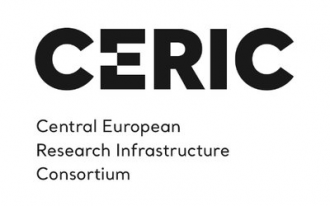Central European Research Infrastructure Consortium (CERIC-ERIC)
27 April 2021
Modified: 27 February 2024
Reading time: 2 minute(s)
 The Central European Research Infrastructure Consortium (CERIC) aims to provide external researchers with access to analytical, structural and imaging studies using synchrotron, neutron beam and other microscopic probes, and to the necessary material modification techniques, in the fields of nanotechnology, environment, materials science, life sciences and cultural heritage. Its mission is also to develop a world-class integrated service that contributes to the development of European science and economy.
The Central European Research Infrastructure Consortium (CERIC) aims to provide external researchers with access to analytical, structural and imaging studies using synchrotron, neutron beam and other microscopic probes, and to the necessary material modification techniques, in the fields of nanotechnology, environment, materials science, life sciences and cultural heritage. Its mission is also to develop a world-class integrated service that contributes to the development of European science and economy.| Short name | CERIC-ERIC |
| Name | Central European Research Infrastructure Consortium |
| Official website | https://www.ceric-eric.eu/ |
| Year of foundation | 2014 |
| ESFRI project/landmark | Not related to ESFRI |
| Headquarters | Trieste, Italy |
| Number of member countries | 8 |
| Participating countries | Austria, Czech Republic, Croatia, Hungary, Italy, Poland, Romania, Slovenia |
| Hungary’s accession | 2016 |
| Partner institutions in Hungary |
HUN-REN Centre for Energy Research Budapest Neutron Centre (partner facility), HUN-REN Wigner Research Centre for Physics, HUN-REN Institute for Nuclear Research, BME Institute of Nuclear Techniques, Eötvös Loránd University, HUN-REN Biological Research Centre, Szeged |
| Public administration representative |
Gábor Csirikusz National Research, Development and Innovation Office Department for Strategy and Monitoring 1077 Budapest, Kéthly Anna tér 1. Phone: +36 1 896 3707 Email: gabor.csirikusz@nkfih.gov.hu |
| Professional representative |
Horváth Ákos Director General HUN-REN Centre for Energy Research |
| Membership payments | Since our accession, we have enjoyed free membership, but from 1 January 2022, all participating Member States will have to pay membership fees, subject to unanimous approval by the General Assembly. The 18th General Assembly of CERIC-ERIC will prepare the model for Member States’ contributions in July 2021, and the 19th General Assembly, expected to be held in November 2021, will vote on the membership fees. Under the current plan, 90% of the membership fee will be returned to the partner institution in the Member State and will be used for its integrated research activities, such as joint research projects between partner institutions, infrastructure and small-scale equipment investments, exchanges of PhD students, etc. |
Benefits of the membership for Hungary
The domestic scientific value of CERIC-ERIC lies primarily in its proactive involvement/participation in the Central European large-scale analytical research bloodstream in a highly organised multidisciplinary service framework.
In the short term, the economic impact at country level will mainly come from the expenditure of researchers coming to the facilities and the organisation of conferences. In the longer term, joint project proposals can be expected. This could be linked to an increase in revenues from industrial development and innovation, which could even result in successful spin-off companies with market potential. They are already generating new public revenues and jobs on their own.
Updated: 27 February 2024






